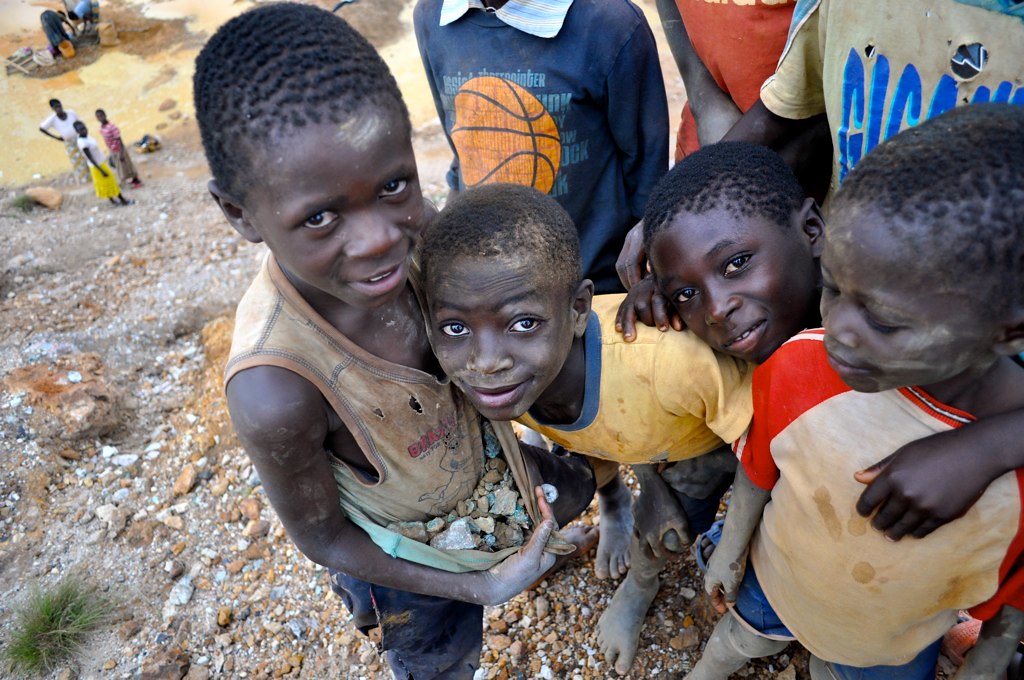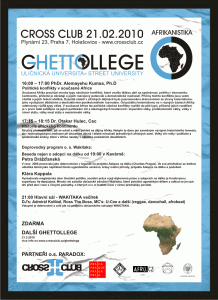As the world turns to critical minerals to power a sustainable future, the dark side of this green revolution looms large. Critical minerals, essential for renewable energy technologies, hold the promise of a cleaner world yet carry a complex curse. While touted as the cornerstone of sustainable development, these minerals are largely mined in countries with poor human rights records, where exploitation and environmental degradation are rampant. With China holding a near-monopoly over critical minerals production and refining, the promise of a fair and just energy transition is marred by geopolitical and ethical challenges. Can this so-called green transition truly be socially just?
The world’s energy sector has progressively been changing the course of its development. Even though the change is relatively slow and, according to some, not yet sufficient, its mere existence proves two things: one, after recent wartime events in Ukraine and Gaza, the countries have recognized the pressing need for energy diversification, and second, the climate change shall not be trivialized as a topic reserved for tree-huggers and painting destroyers only. The transition has so far, however, proven to be neither diversified nor just. The newfound drive for sustainability found its engine in the critical minerals, literally. But, since most of the supply remains controlled by countries with questionable socio-political stances and the production itself proves to be incredibly damaging to human lives, the dream of a greener, juster, and more sustainable future is monopolized by the privileged and remains a nightmare for many more.
Fossil energy sources are rightfully linked with a paradox of resource curse, a phenomenon where countries rich in natural resources, like oil or minerals, often experience less economic growth and worse development outcomes than countries with fewer resources. This occurs because reliance on resource exports can lead to economic instability, corruption, and weaker institutions, hindering broader economic progress. Interestingly, sustainable energy sources are broadly praised as bearers of a more diversified, greener, and more just future. However, as the global critical minerals producers are linked with atrocious human rights abuses and unwillingness to ameliorate the conditions of manufacturing, one cannot resist asking – is sustainable transition really that just?
Furthermore, since the potential of the green revolution saw the interest of many not-so-green investors, the People’s Republic of China, a fervent capitalist, could not resist joining the party. Whether as means of weaving wider web of influence in the developing countries or securing a spot in the net-zero scenario, besides investing in various fields of renewable energy sourcing, China’s eyes have been locked on the production of the world’s critical minerals supply.
Over the years, Chine’s exported products have become indispensable parts of the Western lifestyle – impacting the ways goods and information, in other words, the fuel of the developed world, are consumed. As a global player with the world’s second-largest GDP, aspiring to dethrone the United States from the first place, China has decided to dedicate its efforts to the fuel of the future – sustainable energy. However, facing numerous human rights abuses committed against its ethnic Uyghur minority, including re-education camp detention, religious oppression, freedom abuses of the members of the dissent, and more, China’s reality is nowhere near just or sustainable. [1] [2]
What makes them critical
The dynamics of the twenty-first century, both wartime and environmentally challenging, have shed light on the necessity of green transition. Exposing the insufficient diversification of energy networks, the wars in the Middle East and Ukraine contributed to the growing efforts for multi-layered energy diversification. As a means of achieving a sustainable transition, the private and public sectors have rightfully been linking certain minerals with a green future and marking them as critical to their success. [3] [4] Even though there is not one unified definition and a mineral’s criticality is context-specific, most countries find it in the mineral’s importance to the national economy. Additionally, the U.S. Department of Defense, the U.S. Department of Energy, and the European Commission classify certain minerals as critical due to their essential role in national defense and security, as well as the significant risks posed by potential disruptions in their supply. With the shift in global energy consumption, interest in green politics, and the following energy mix modifications, the lists of critical minerals change with time, and so does their policy. Although there is an extensive list of the total of 50 minerals, the United States highlights eighteen of them as critical for energy, or “the electric eighteen”, [I] as their critical use may be found in the renewable energy sector. The European Union alike has composed a total of five lists of critical raw minerals, the first being published in 2011 and the last in 2023. [5] [6] [7] The latest list includes thirty-four raw minerals. [II] Although Africa accounts for around 30% of the global critical minerals, the African Union has not yet developed a comprehensive critical minerals-oriented strategy. [8]
While the lists are extensive, only four minerals are deemed critical to reaching net zero emissions – cobalt, copper, lithium and nickel. [9] As lithium is widely used as a fundamental component of lithium-ion batteries powering electric vehicles (EV) and battery energy storage systems, it is recognized as the most important of the energy transition minerals. [III] According to the International Energy Agency (IEA), the top three global mined lithium producers are Australia (33%), China (23%), and Chile (12%). [10] In contrast, the top three global refined lithium producers are China (57%), Chile (15%), and Argentina (13%). [11] The dominance of lithium processing capabilities underscores China’s interest in control over the supply chain, as demonstrated by various strategic investments. With the global largest producers masquerading as going green, it hardly comes as a surprise that China, the largest CO2 emitter, invests in sustainable energy. The actors change, but the motives do not. Chinese green investments are not powered by environmental ethics; their sole motivation lies in the security of their future role at the international table and cash flows, a future that is greener and definitely not juster.

A similar scenario as seen with lithium may be seen with its younger self, cobalt. While in the lithium case, IEA declares the geopolitical risk of monopoly on mining by the top three producers in 2030 to be 84%, cobalt reached an 85% risk of monopolization by one single country – China. [10] According to the same analysis, the global supply of cobalt will find its origin in the democratically challenged Democratic Republic of Congo (DRC) (66%), Indonesia (10%), and Russia (3%). In contrast, the majority of the supply is not to be refined in either of these countries. China will control 74% of the global cobalt capacities, second will come Finland (6%), and a close third Japan (4%). [10] Cobalt’s vital role in the green transition lies in rechargeable batteries for EVs, laptops, and smartphones. Additionally, it is a fundamental compound used in aerospace and defense applications. Its qualities, therefore, perfectly illustrate the criticality of such minerals. First, cobalt is essential in national defense, second, it is pivotal in the green transition.

The rest of the key critical minerals, such as copper and nickel, are not facing the same geopolitical risks of monopolization of the strategic resource. Nickel’s supply side is relatively well diversified, with Indonesia expected to lead in mining and refining, but is balanced out by China, the Philippines, New Caledonia, and Japan. Even though nickel’s supply is not exposed to threats of control dominance, it struggles with unsustainable mining practices threatening the surrounding communities. [12]
Compared to the three mentioned, a significant portion of copper’s reserves may remain undiscovered, particularly in underexplored regions of Africa, South America, Asia, and deep-sea deposits on the ocean floor. [13] Due to this reality, IEA analysis estimates the supply monopoly risk to be relatively diversified. [14] Like the others, however, copper was not spared a downside to its existence. Its mining has proven to be causing significant environmental pollution. [15] [16]
Too critical to be just
Undoubtedly, critical minerals hold significant power over the future of the green transition. Now, the question remains: who holds the power over them? Even though vast reserves of critical minerals crucial for energy transition are located in Africa, South America, and the Pacific, their exponential demand attracts investments from external parties with compromised renomé – most notably China. As the Brookings Institution analysis shows, China holds a near monopoly on the critical minerals mining industry – 68% of global nickel, 40% of copper, 59% of lithium, and 73% of cobalt. Furthermore, it is also said to be a key actor in the later stages of the supply chain. [17] As a result, the country controls “almost 85% of global battery cell production capacity.” [18] Additionally to being the world’s largest battery market and making up over 50% of the global battery use in the energy sector, it is set to expand its battery empire. However, as the Western plans for self-sufficient sustainable energy unfold, a drop of Chinese dominance by around a third of the global total is suggested by 2030. Such self-sufficient plans are outlined by the U.S. ambitions to invest in sustainable lithium production, objectives of collection and recycling of lithium-ion batteries, and more. Furthermore, the United States’ motive to internationalize and diversify–away from China – has been demonstrated in its intervention in talks of DRC mine sale to a Chinese-owned Norinco company, notorious for arms exports to DRC. [19] [20] [21]

Even though a notion of a geopolitically diversified supply chain appears to be the engine behind policy-making promoting (out)sourcing critical minerals, it is impossible not to take ethical, human rights, and sustainability concerns tied to Chinese labor practices into account. A report published by the Business & Human Rights Resource Centre, an international NGO tracking human rights, brought attention to numerous labor and human rights abuses associated with Chinese lacking workplace regulations and due diligence that exposes mining communities to various vulnerabilities. [22] The report shows that most of the allegations (total of 102) involve abuses against local communities; half of them entail negative environmental implications regarding water pollution, and the third concerns workers‘ rights. Similarly, last year’s Amnesty International and Good Governance and Human Rights (IBGDH) initiative report shows a direct link between DRC’s cobalt and copper mines and grievous human rights abuses. [23]
Since critical minerals’ future prospects attract wide attention of international players, they are likely to become a key means of future power. [IV] Bearing the context in mind, one cannot help but wonder if the critical minerals are not just too critical to be just – alike their fossil predecessors.
In the case of cobalt, at least 70% of the supply comes from DRC. Furthermore, 60-70% of DRC’s cobalt supply is then processed in China and additionally, fifteen out of the seventeen cobalt mines in DRC are Chinese-owned. [24] Bejing dominance and its geopolitical and ethical implications are, however, not the only challenge to the ethics of critical minerals. Lack of human rights safeguarding is also linked to weak regional governance and intervention in the abuses committed in the unregulated small-scale mines. [25] DRC is recognized as one of the world’s most corrupt countries, and its engagement in mining has recently raised wide concerns about its legitimacy. [26] [27] As a result of the international concerns, the country implemented the Responsible Sourcing Standard in 2021 and established the Entreprise Générale du Cobalt (EGC), a new state entity to oversee the regulation of buying and selling artisanal cobalt. [28] [29] According to the Financial Times analysis, these endeavors exist only on paper as their implementation is hampered by political and bureaucratic problems. [30]
The struggles of miners have recently gained significant attention from major global news outlets, with headlines focusing on the so-called „Blood Cobalt.“ [33] Amnesty International and IBGDH report shows that Chinese-funded companies have participated in evictions, home demolitions and sexual assaults on the mining community. Furthermore, it has been reported that Chinese-owned mining companies partake in racially-driven discrimination [34] and are linked with employing an estimated amount of 25,000 children. [35] While Western media rightly point out that small-scale mines are often associated with underpaid labor, unhealthy conditions, and child exploitation, a paper by the International Institute for Environment and Development suggests there is a roadmap for improving human rights. According to the paper, artisanal miners have been voicing their demands for access to viable mine sites, safer working conditions, and fair compensation for the valuable ore they extract. [V] [36] China’s dominant involvement in critical minerals production suggests its key role in the development of the field. Therefore, it is fair to assume China should not only serve as the producer, exporter, and profit harvester. In order to meet the set goals of sustainable and just character of green energy, it should accordingly take on a role of regulator as well.
Although Western countries have previously outlined plans to hold the abusers accountable, some of the Western EV manufacturers are mindfully signing contracts with ethical mines, and the OECD provides guidance on how to conduct the due diligence in the mineral supply chain, no significant change has been made. [37] [38] Critical minerals, most notably lithium and copper, continue to be linked with water scarcity due to the spilling of waste into rivers, streams and underground aquifers used for drinking. [39] [40] They are associated with mass deforestation and environmental pollution, especially in remote regions with little to no hope for a more conservationist approach. [41]

Breaking the curse
The reality of a more just and sustainable future seems far away – especially under the thumb of the critical minerals. However, as the future is yet to be shaped by today’s decisions, it is fair to say that not all is lost. The future of the critical minerals supply chain will only mirror the decisions of today’s policy-makers, miners, and hardcore mineral capitalists. Some of them, notably Elon Musk, have already called for more environmentally conscious mining. [42] Speeches at minerals-related conferences are, however, not enough. A united approach rooted in the ESG principles (environmental, social and governance) is crucial for a long-term change of the wide-range impacts of minerals mining and processing. [43] [44] If consumers are becoming more aware of the social and environmental consequences of the products they invest in, the major battery manufacturers need to continue pursuing this journey of awareness. So shall the global players, who – although presently dependent on fossil fuels – will need to make a bold shift. A shift that is critical and just to the present approach to energy.
Battery metals powered by critical minerals are currently exposed to a high risk of substitution. [45] Although the aforementioned ethical and ecological issues with critical minerals are being heard around the globe more and more, the primary reason to diversify from them is their expensiveness and hard acquisition. If the substitution takes place, vulnerable communities around the world will be, once again, exposed to new difficulties to deal with. Shedding the light on the DRC’s struggle may help shape the narrative of a pressing need for action; however, it should not be considered as an inescapable truth. If both public and private actors take a more environmentally and socially aware approach, the present-day status quo will be outgunned. The critical minerals curse will be broken once human lives are taken seriously and (Chinese) regulation-related due diligence is tightened.
Furthermore, as Raj Shah, president of the Rockefeller Foundation, noted “global co-operation requires public and private partnership.” [46] Should Western human rights-conscious capitalists invest in the critical minerals development efforts in DRC, the Chinese monopoly would be balanced. Endeavors such as the U.S. deal intervention in DRC are welcome, but they are not sufficient yet. A broader, more united recognition of human rights abuses overseen by Chinese companies in DRC must be taken. Accordingly, understanding the implications of the Chinese monopolistic industry’s presence on DRC’s human rights development and democratic progress is crucial in order to take action.
Unless such a change of course is made, the green revolution will, indeed, be televised – and it will only make change for people who have time to watch the mainstream series. Others, who hardly have access to safe drinking water, will continue to manufacture the compounds for our portable televisions.
Article reviewed by Michaela Mildorfová and Martin Machorek
Notes
[I] This list includes aluminum, cobalt, copper, dysprosium, electrical steel, fluorine, gallium, iridium, lithium, magnesium, natural graphite, neodymium, nickel, platinum, praseodymium, silicon, silicon carbide, and terbium.
[II] aluminum/ bauxite, antimony, arsenic, baryte, beryllium, bismuth, boron/borate, cobalt, coking coal, feldspar, fluorspar, gallium, germanium, hafnium, helium, HREE, lithium, LREE, magnesium, manganese, natural graphite, biobium, PGM, phosphate rock, copper, phosphorus, scandium, silicon metal, strontium, tantalum, titanium metal, tungsten, vanadium, and nickel.
[III] Altough this is generally accepted, there has been recent development suggesting Cobalt’s dominant significance to renewable transition compared to Lithium. SeeBahini, Y., Mushtaq, R., Bahoo, S., 2024. Global energy transition: The vital role of cobalt in renewable energy. Journal of Cleaner Production 470, 143306. https://doi.org/10.1016/j.jclepro.2024.143306
[IV] For more information on minerals’ significance in geopolitics see Church, C., Crawford, A., 2020. Minerals and the Metals for the Energy Transition: Exploring the Conflict Implications for Mineral-Rich, Fragile States, in: Hafner, M., Tagliapietra, S. (Eds.), The Geopolitics of the Global Energy Transition, Lecture Notes in Energy. Springer International Publishing, Cham, pp. 279–304. https://doi.org/10.1007/978-3-030-39066-2_12.
[V] No effective response from Chinese government was available in time of writing this article.
Sources
[1] Human Rights Watch. 2023. China, Events of 2023. Retrieved from https://www.hrw.org/world-report/2024/country-chapters/china. (Accessed on November 14, 2024)
[2] Human rights in China. (n.d.). Retrieved from https://www.amnesty.org/en/location/asia-and-the-pacific/east-asia/china/report-china/
[3] Final list of critical minerals 2022 – policies. IEA. (n.d.). IEA. Retrieved from https://www.iea.org/policies/15271-final-list-of-critical-minerals-2022
[4] Calderon, J. L., Smith, N. M., Bazilian, M. D., & Holley, E. (2024). Critical mineral demand estimates for low-carbon technologies: What do they tell us and how can they evolve? Renewable and Sustainable Energy Reviews, 189, 113938. doi:10.1016/j.rser.2023.113938
[5] Final list of critical minerals 2022 – Policies – IEA. (n.d.). IEA. https://www.iea.org/policies/15271-final-list-of-critical-minerals-2022
[6] What are critical materials and critical minerals? (n.d.). Energy.gov. https://www.energy.gov/cmm/what-are-critical-materials-and-critical-minerals
[7] Publications Office of the European Union. (2023). Study on the critical raw materials for the EU 2023 : final report. Publications Office of the EU. https://op.europa.eu/en/publication-detail/-/publication/57318397-fdd4-11ed-a05c-01aa75ed71a1
[8] South African Institute of International Affairs. (2024, July 23). The Geopolitics of Energy Minerals: How Africa Can Lead the Green Energy Transition – SAIIA %. SAIIA. https://saiia.org.za/research/the-geopolitics-of-energy-minerals-how-africa-can-lead-the-green-energy-transition/
[9] Gordon, O., & Gordon, O. (2023, August 30). The top ten critical minerals powerhouses of the energy transition. Energy Monitor. https://www.energymonitor.ai/sectors/extractive-industries/the-top-ten-critical-minerals-powerhouses-of-the-energy-transition/
[10] Lithium – analysis – IEA. (2024, May 1). IEA. https://www.iea.org/reports/lithium
[11] Critical minerals are the key to 21st-century tech. Here’s the “trilemma” that defines how to mine them. (2024, September 10). World Economic Forum. https://www.weforum.org/stories/2024/08/critical-minerals-are-the-key-to-21st-century-tech-heres-the-trilemma-that-defines-how-to-mine-them/
[12] Cobalt – Analysis – IEA. (2024, May 1). IEA. https://www.iea.org/reports/cobalt#dashboard
[13] Systemiq, US Geological Survey, IEA, & BNEF. (2023). Cobalt for the energy transition: Outlook to 2030 and key challenges. https://www.energy-transitions.org/wp-content/uploads/2023/07/ETC_Materials_Factsheet_Cobalt.pdf
[14] International Energy Forum. (2024, January 9). Nickel – a mineral with a challenging role in clean tech. International Energy Forum. https://www.ief.org/news/nickel-a-mineral-with-a-challenging-role-in-clean-tech
[15] Copper demand and Long-Term availability. (n.d.). International Copper Association. https://internationalcopper.org/sustainable-copper/about-copper/cu-demand-long-term-availability/
[16] Copper – analysis – IEA. (2024, May 1). IEA. https://www.iea.org/reports/copper#dashboard
[17] Izydorczyk, G., Mikula, K., Skrzypczak, D., Moustakas, K., Witek-Krowiak, A., & Chojnacka, K. (2021). Potential environmental pollution from copper metallurgy and methods of management. Environmental Research, 197, 111050. https://doi.org/10.1016/j.envres.2021.111050
[18] TENORM: Copper mining and production wastes | US EPA. (2024, August 13). US EPA. https://www.epa.gov/radiation/tenorm-copper-mining-and-production-wastes
[19] Castillo, R., Purdy, C., Brookings Institution, & Results for Development. (2022). China’s role in supplying critical minerals for the global energy transition. https://www.brookings.edu/wp-content/uploads/2022/08/LTRC_ChinaSupplyChain.pdf
[20] Executive summary – Batteries and Secure Energy Transitions – Analysis – IEA. (n.d.). IEA. https://www.iea.org/reports/batteries-and-secure-energy-transitions/executive-summary
[21] Mariani, B., Observatoire de l’Afrique centrale et australe, Ifri, Direction générale des relations internationales et de la stratégie du ministère des Armées, Saferworld, Kirkham, E., Mwachofi, S., & Nakamitsu, I. (2021). CHINA’S ARMS EXPORTS TO SUB-SAHARAN AFRICA. https://archives.defense.gouv.fr/content/download/635898/10510460/file/Note%2029%20Arms%20transfers_pdf.pdf.
[22] House, W. (2022, February 22). FACT SHEET: Securing a made in America supply chain for critical minerals. The White House. https://www.whitehouse.gov/briefing-room/statements-releases/2022/02/22/fact-sheet-securing-a-made-in-america-supply-chain-for-critical-minerals/
[23] Dempsey, H., & Wilson, T. (2024, July 5). US intervened in Congo mine sale to Chinese arms group. Financial Times. https://www.ft.com/content/4c5faaa4-d041-4f58-b9ef-ca84f074009d
[24] Human rights abuses linked to Chinese investment in transition mineral projects overseas – Business & Human Rights Resource Centre. (n.d.). Business & Human Rights Resource Centre. https://www.business-humanrights.org/en/from-us/media-centre/human-rights-abuses-linked-to-chinese-investment-in-transition-mineral-projects-overseas/
[25] Andrews, J. (2023, December 18). China’s role in critical mineral mining and its impacts. Institute of Development Studies. https://www.ids.ac.uk/opinions/chinas-role-in-critical-mineral-mining-and-its-impacts/
[26] Wells, V. a. P. B. K. (2023, May 31). China’s Monopoly over Critical Minerals. Georgetown Security Studies Review. https://georgetownsecuritystudiesreview.org/2023/06/01/chinas-monopoly-over-critical-minerals/
[27] Amnesty International. (2023b, October 31). Democratic Republic of the Congo: Industrial mining of cobalt and copper for rechargeable batteries is leading to grievous human rights abuses. https://www.amnesty.org/en/latest/news/2023/09/drc-cobalt-and-copper-mining-for-batteries-leading-to-human-rights-abuses/
[28] 2022 Corruption Perceptions Index – Explore Democratic Republic of. . .. (2023, January 31). Transparency.org. https://www.transparency.org/en/cpi/2022/index/cod
[29] Posner, M., & Baumann-Pauly, D. (2023, September 10). Teaching case: Digging into the ethics of cobalt mining. Financial Times. https://www.ft.com/content/81ab1d09-68b0-43c1-9155-5f1394ec73c5
[30] Entreprise Générale du Cobalt. (2022, September 9). Entreprise Générale Du Cobalt. https://www.egcobalt-rdc.com/fr/
[31] Responsible sourcing standards – Entreprise Générale du Cobalt. (2022, September 9). Entreprise Générale Du Cobalt. https://www.egcobalt-rdc.com/responsible-sourcing-standards/
[32] Posner, M., & Baumann-Pauly, D. (2023c, September 10). Teaching case: Digging into the ethics of cobalt mining. Financial Times. https://www.ft.com/content/81ab1d09-68b0-43c1-9155-5f1394ec73c5
[33] Umpula, E., & Dummett, M. (2024). The Blood Cobalt narrative: Addressing human rights concerns or scaremongering? Business and Human Rights Journal, 1–7. https://doi.org/10.1017/bhj.2024.4
[34] Pattisson, P. (2021, December 6). ‘Like slave and master’: DRC miners toil for 30p an hour to fuel electric cars. The Guardian. https://www.theguardian.com/global-development/2021/nov/08/cobalt-drc-miners-toil-for-30p-an-hour-to-fuel-electric-cars
[35] From Cobalt to cars: How China exploits child and forced labor in the Congo | CECC. (2024, August 27). CECC. https://www.cecc.gov/events/hearings/from-cobalt-to-cars-how-china-exploits-child-and-forced-labor-in-the-congo
[36] Nkumba-Umpula, E., Buxton, A. and Schwartz, B. (2021). Islands of responsibility? Corporate sourcing of artisanal cobalt in the Democratic Republic of Congo. IIED, London. Available at https://www.iied.org/20436iied
[37] Responsible business conduct. (n.d.). OECD. https://www.oecd.org/en/topics/responsible-business-conduct.html
[38] Pelon,Remi; Hund,Kirsten Lori; Fabregas Masllovet,Thao Phuong; De Sa,Paulo; Mcmahon,Gary Joseph Raymond. Cobalt in the Democratic Republic of Congo : Market Analysis (English). Washington, D.C. : World Bank Group. http://documents.worldbank.org/curated/en/099500001312236438/P1723770a0f570093092050c1bddd6a29df
[39] United Nations Environment Programme. (n.d.). What are energy transition minerals and how can they unlock the clean energy age? UNEP. https://www.unep.org/news-and-stories/story/what-are-energy-transition-minerals-and-how-can-they-unlock-clean-energy-age
[40] Seidenfaden, J. (2016, January 22). Impacts of copper mining on people and nature. Danwatch. https://danwatch.dk/en/impacts-of-copper-mining-on-people-and-nature/
[41] Baraputri, B. V. (2023, July 10). The rush for nickel: “They are destroying our future.” https://www.bbc.com/news/world-asia-66131451
[42] Sun, Yilei, and Melanie Burton. “please Mine More Nickel,” Musk Urges as Tesla Boosts Production | Reuters, www.reuters.com/article/tesla-nickel-idUSL3N2EU0HH. Accessed 12 Nov. 2024.
[43] Andrews, J. (2023, December 18). China’s role in critical mineral mining and its impacts. Institute of Development Studies. https://www.ids.ac.uk/opinions/chinas-role-in-critical-mineral-mining-and-its-impacts/
[44] Financial markets. (n.d.). OECD. https://www.oecd.org/en/topics/financial-markets.html
[45] Hook, L., Dempsey, H., & Nugent, C. (2023, August 8). The new commodity superpowers. Financial Times. https://www.ft.com/content/0d2fba79-940f-4a28-8f4f-68f1e755200f
[46] Williams, A. (2024, September 20). Western philanthropies drum up climate finance ahead of UN meetings. Financial Times. https://www.ft.com/content/eea586d6-3ef5-465a-964b-ce940959a0c1





